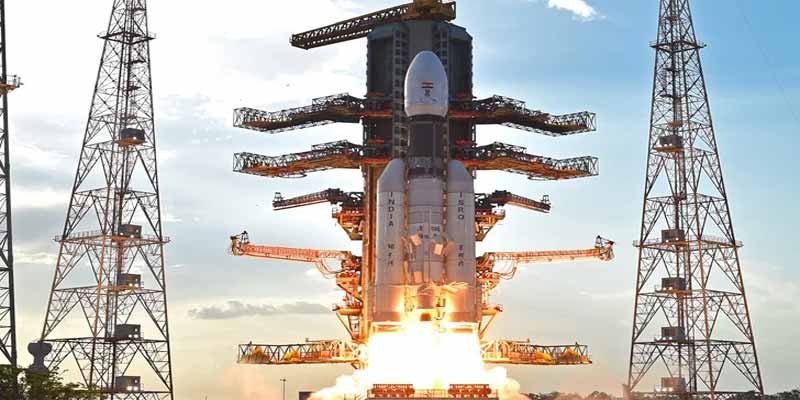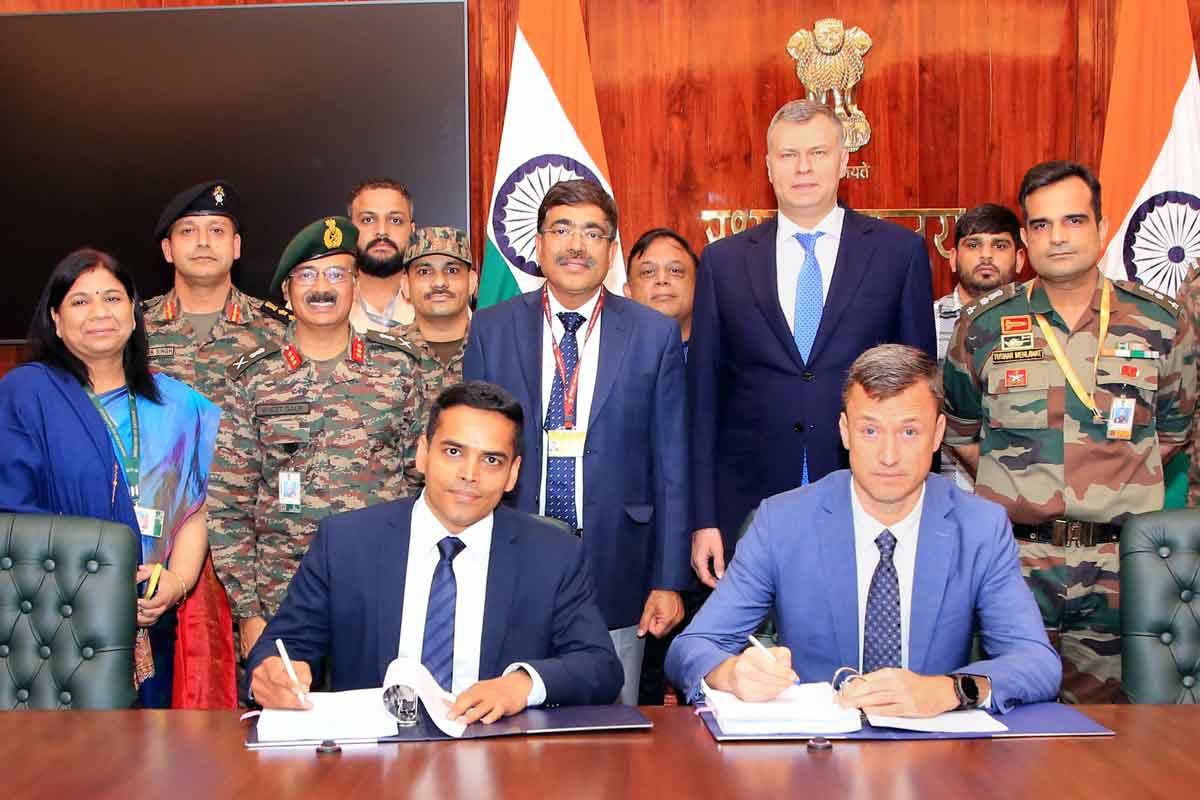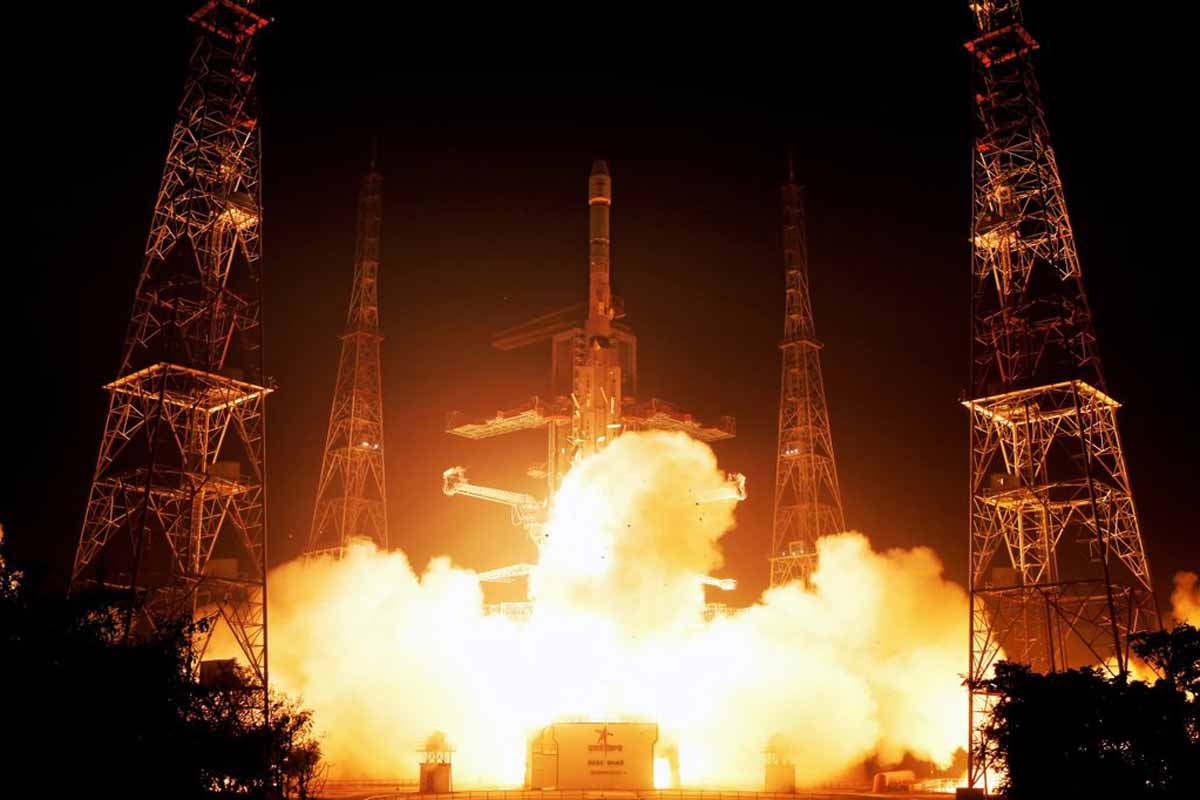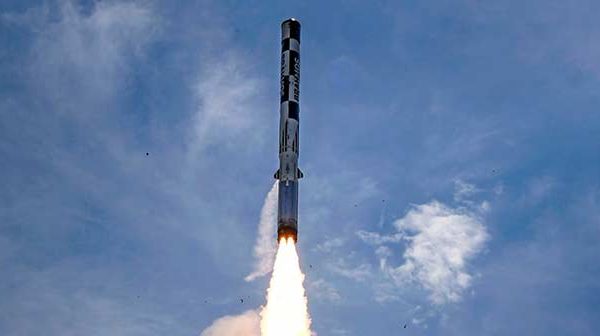India Monday successfully launched its communication satellite GSAT-19 with its brand new and heaviest Geosynchronous Satellite Launch Vehicle-Mark III D-1.
In a perfect launch, India’s most powerful ever rocket, built by the national space agency ISRO, zoomed in the space with the heaviest satellite.
From there, the satellite would be taken up to its final geostationary orbit through remote maneuvering.
The rocket blasted off from the Satish Dhawan Space Centre, Sriharikota, precisely at 5.28 p.m. with the satellite weighing 3136 kg during lift off.
After about 16 minutes, the 43.43 metre tall rocket, which is nick named as ‘fatty boy’, injected the satellite in space.
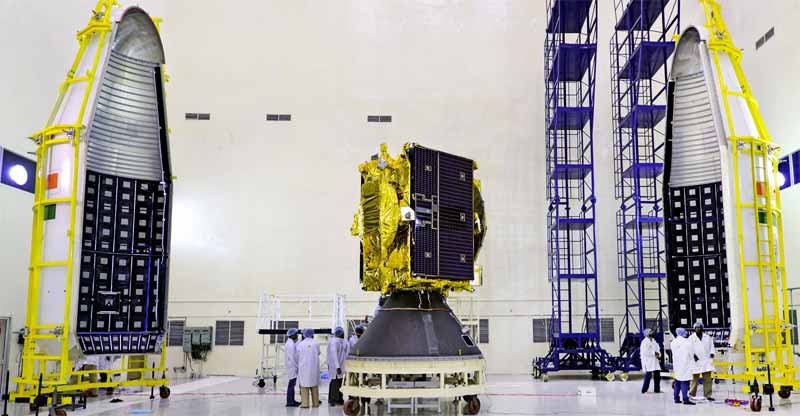
GSAT-09 satellite standing between two halves of GSLV Mark III rocket before the launch.
The ISRO Chairman AS Kiran Kumar termed the momentous occasion as historic and congratulated the scientists.
Meanwhile President and Prime Minister have congratulated ISRO for successful launch of GSLV – Mark III carrying GSAT-19 satellite.
In a tweet message to ISRO Chairman A.S. Kiran Kumar, the President said the nation is proud of this significant achievement.
He said the GSLV-Mk III was the heaviest rocket ever made by India and was capable of carrying the heaviest satellites made till date.
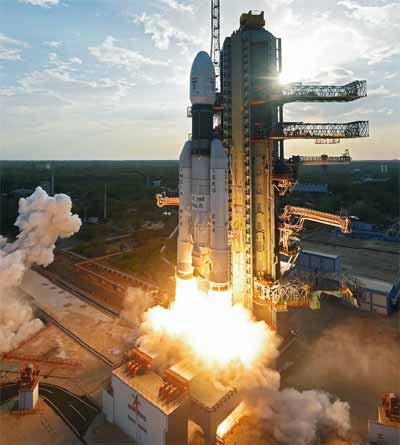
India’s heaviest and most powerful rocket GSLV Mark III lifts off from Satish Dhawan space centre.
In a tweet message, Prime Minister Narendra Modi extended his congratulated the scientists of ISRO for the successful launch.
The satellite GSAT-19 has an expected life span of 10 years. It is a multi-beam satellite carrying Ka and Ku band forward and return link transponders.
It also has an experimental payload called the geostationary radiation spectrometer-GRASP, to monitor and study the nature of charged particles in space and the influence of space radiation on satellites.
The GSLV-Mk III is a three stage rocket. The first stage is fired by two strap-on motors filed with solid fuel. The second stage uses the liquid fuel and the third is the cryogenic upper stage, named as the C25, which is powered by the highly complex indigenous cryogenic engine, CE20.


